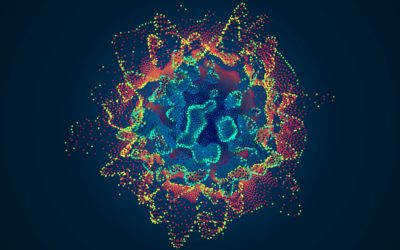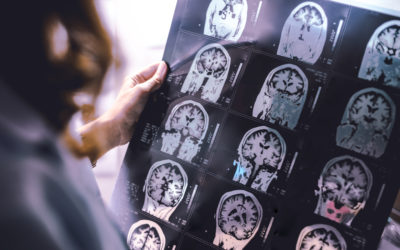Quick Hits
Daily brief research updates from the cognitive sciences
 Fear is an important human emotion and essential to survival so not to be underestimated. It allows us to avoid life-threatening situations and avoid them again in the future – so fundamentally a good thing. However, we also know that fear can be debilitating, cause inaction, anxiety, and be involved in multiple psychiatric disorders such as PTSD.
Fear is an important human emotion and essential to survival so not to be underestimated. It allows us to avoid life-threatening situations and avoid them again in the future – so fundamentally a good thing. However, we also know that fear can be debilitating, cause inaction, anxiety, and be involved in multiple psychiatric disorders such as PTSD.
We know that fear and threat is primarily, initially at least, processed in a part of the brain called the amygdala. This also controls attention (and also other emotions). This then connects to the frontal regions of the brain. These frontal regions are involved in attention, but also cognition and what we can consider higher, or executive, functions, such as decision making and also controlling our impulses.
This has been known for a long time, but this does not help us understand the precise mechanisms of fear and how in some people it becomes entrenched and leads to severe anxiety disorders.
A group of researchers around Barchiesi of the Linköping University in Sweden have now given us a deeper insight into this and how this happens in a paper just published.
This is where it gets technical – as if the above wasn’t. But let me guide you through this.
Previous research has shown that there is an epigenetic enzyme called PRDM2 that supresses the expression of many genes. Your genes are in constant cycles of activation and deactivation to perform their duties and different enzymes up or down regulate these.
PRDM2 has previously been seen to be lower in those with alcohol dependence and exaggerated stress responses are common in those people. Hence why the researchers zoomed in on this enzyme.
The researchers found that indeed downregulation of PRDM2 increases the consolidation of fear memories in rats by increasing the activity between the frontal lobes and the amygdala. They have also, in addition been able to identify the genes that are downregulated.
This may sound like a bit of technical description, but this is significant step forward in understanding the mechanisms of fear getting stuck in the brain and leading to anxiety disorders.
Unfortunately, there is no know way to upregulate PRDM2 – that I imagine will be the focus of future research.
But for now, let’s at least be grateful for the step forward in understanding the neurobiology of fear.

Andy Habermacher
Andy is author of leading brains Review, Neuroleadership, and multiple other books. He has been intensively involved in writing and research into neuroleadership and is considered one of Europe’s leading experts. He is also a well-known public speaker, speaking on the brain and human behaviour.
Andy is also a masters athlete (middle distance running) and competes regularly at international competitions (and holds a few national records in his age category).
References
Barchiesi Riccardo, Chanthongdee Kanat, Petrella Michele, Xu Li, Söderholm Simon, Domi Esi, Augier Gaelle, Coppola Andrea, Joost Wiskerke, Ilona Szczot, Domi Ana, Adermark Louise, Augier Eric, Cantù Claudio, Heilig Markus, Barbier Estelle.
An epigenetic mechanism for over-consolidation of fear memories.
Molecular Psychiatry, 2022
DOI: 10.1038/s41380-022-01758-6
More Quick Hits
Your brain on near-death experiences
Near-death experiences have fascinated many people ever since they have been reported. And these experiences guide our view of how we die: the memories of your life passing in front of your eyes, the tunnel of light, the floating movement towards a bright light....
Social networks grow your brain
The headline is a bit “click baity” but it is what a group of researchers found. To be more specific they found in macaques (cute monkeys) in the wild that having more grooming partners grew different regions of the brain. Grooming is the primate version of having a...
What do creative brains look like?
We’d probably all be happy to be a bit more creative — though research into our own opinions show that many people do actually consider themselves to be above average in creativity. An obvious self-bias. This is where scientists who study creativity come in and find...
New gender biases discovered
There have been many studies on gender biases, and I have followed, written, and spoken about many of these biases over the years (over a decade actually) but two studies have just come out that caught my eye. One out of New York University focused on gender natural...
Growth of your brain over your life
So, we all know that our brain grows very quickly as babies and children and then after a certain age, younger than some of us may like to think, there begins a slow decline. But precisely what and how is the question. Well, this is a question that an international...
How to reduce loneliness
I have reported multiple times on loneliness during the pandemic – mostly because interest and research into loneliness has taken a large uptick. I have also reported on how to combat this and was happy to see that a piece of research just out proved what I had...






